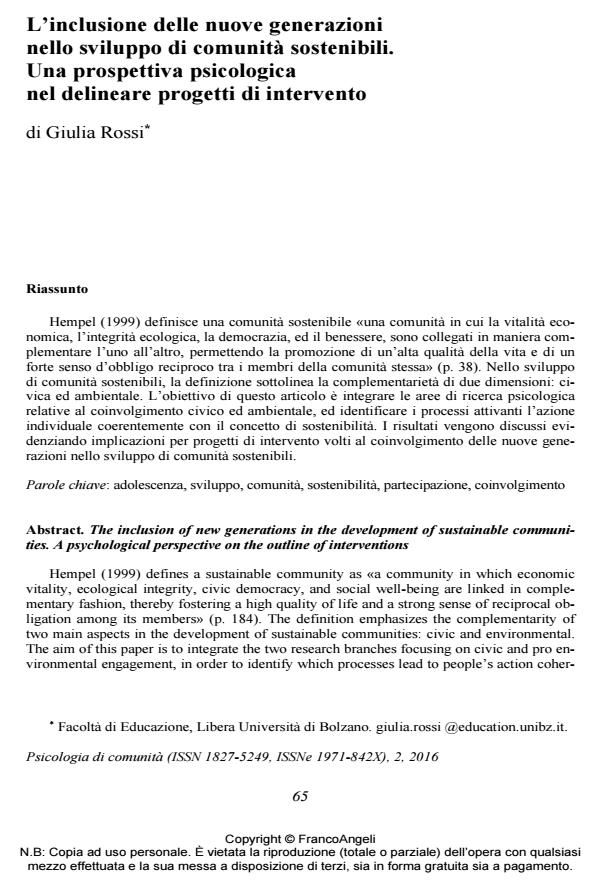The inclusion of new generations in the development of sustainable communities. A psychological perspective on the outline of interventions
Journal title PSICOLOGIA DI COMUNITA’
Author/s Giulia Rossi
Publishing Year 2017 Issue 2016/2
Language Italian Pages 14 P. 65-78 File size 559 KB
DOI 10.3280/PSC2016-002007
DOI is like a bar code for intellectual property: to have more infomation
click here
Below, you can see the article first page
If you want to buy this article in PDF format, you can do it, following the instructions to buy download credits

FrancoAngeli is member of Publishers International Linking Association, Inc (PILA), a not-for-profit association which run the CrossRef service enabling links to and from online scholarly content.
Hempel (1999) defines a sustainable community as «a community in which economic vitality, ecological integrity, civic democracy, and social well-being are linked in complementary fashion, thereby fostering a high quality of life and a strong sense of reciprocal obligation among its members» (p. 184). The definition emphasizes the complementarity of two main aspects in the development of sustainable communities: civic and environmental. The aim of this paper is to integrate the two research branches focusing on civic and pro environmental engagement, in order to identify which processes lead to people’s action coherently with the concept of sustainability. Results give rise to implications for projects, whose aim is new generations’ engagement in the development of sustainable communities.
Keywords: Adolescence, development, community, sustainability, participation, engagement
Jel codes: I31, I38, Z13
Giulia Rossi, L’inclusione delle nuove generazioni nello sviluppo di comunità sostenibili. Una prospettiva psicologica nel delineare progetti di intervento in "PSICOLOGIA DI COMUNITA’" 2/2016, pp 65-78, DOI: 10.3280/PSC2016-002007